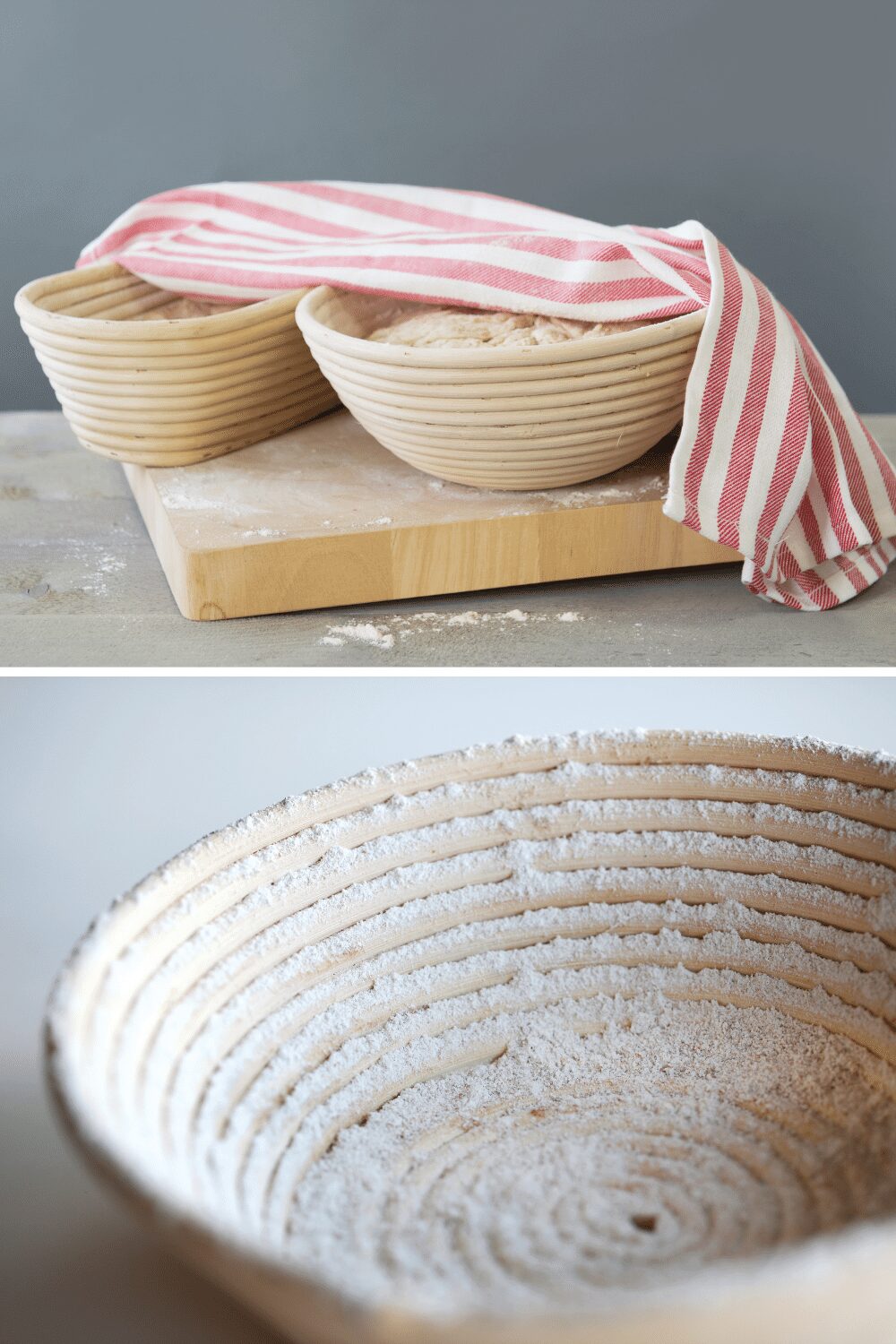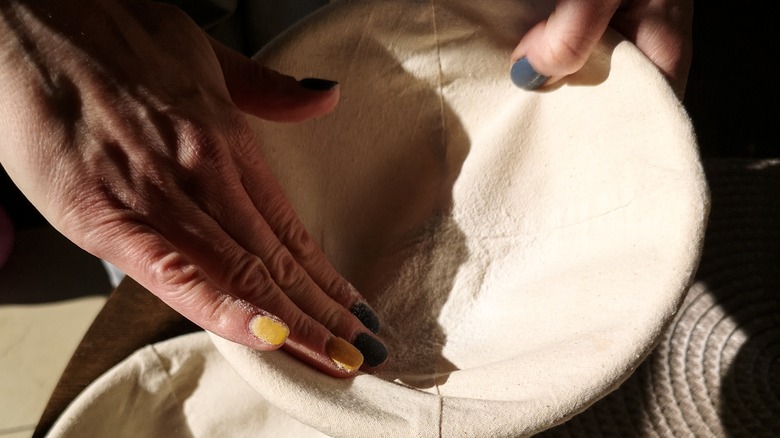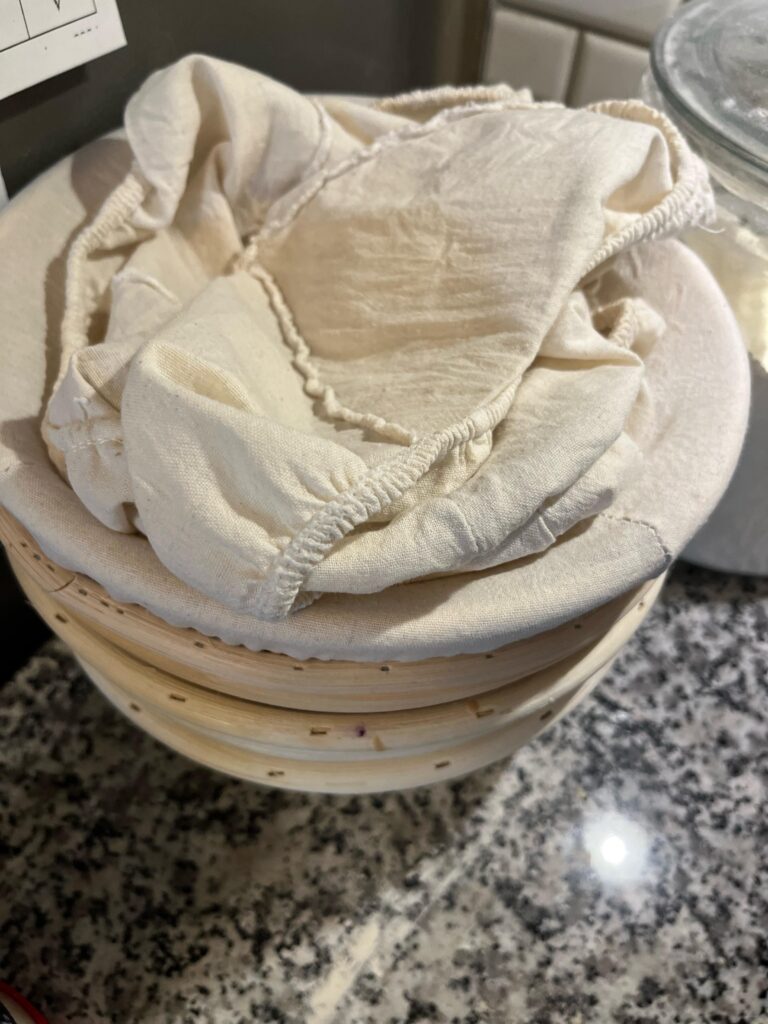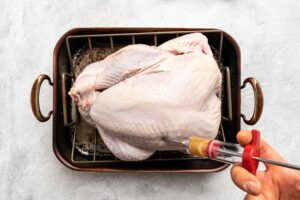Bannetons are essential for perfect bread. Keeping the liner clean ensures the best results.
Banneton liners help shape and proof your dough. They can get dirty quickly. Stains and residues can affect your bread. Clean liners make a big difference. Proper care extends the life of your banneton. It’s worth learning some cleaning tips.
In this blog, we’ll explore simple and effective cleaning methods. These tips will keep your banneton liner in top condition. Whether you’re a home baker or a professional, clean tools are crucial. Let’s dive into the best ways to maintain your banneton liner.

Credit: www.pantrymama.com
Importance Of A Clean Banneton Liner
Maintaining a clean banneton liner is crucial for successful bread baking. A dirty liner can harbor mold and bacteria, affecting both the quality and safety of your bread. Regular cleaning not only improves hygiene but also extends the life of your banneton.
Impact On Bread Quality
A clean banneton liner ensures that your dough rises properly. Any residue or contaminants can alter the texture and taste of your bread. Clean liners help to keep your bread free from unwanted flavors or odors. This results in a more consistent and delicious loaf every time.
Preventing Mold And Bacteria
Mold and bacteria thrive in damp, unclean environments. A dirty banneton liner can become a breeding ground for these harmful organisms. To prevent this, it is essential to clean and dry your liner thoroughly after each use. This simple practice can make a big difference in keeping your bread safe and healthy.
| Cleaning Tips | Benefits |
|---|---|
| Brush off excess flour | Removes surface residue |
| Hand wash with mild soap | Eliminates bacteria |
| Air dry completely | Prevents mold growth |
Follow these steps to keep your banneton liner in top condition:
- Brush off any excess flour immediately after use.
- Hand wash the liner using mild soap and warm water.
- Rinse thoroughly to remove all soap residues.
- Air dry the liner completely before storing it.
These steps are simple but effective in maintaining a clean and safe banneton liner. A clean liner not only enhances your bread’s quality but also ensures a healthier baking environment.

Credit: www.tastingtable.com
Choosing The Right Cleaning Supplies
Maintaining a clean banneton liner is essential for healthy and tasty bread. Choosing the right cleaning supplies ensures that your banneton liner remains in top condition. This section will guide you through selecting appropriate cleaners and tools.
Natural Vs. Chemical Cleaners
It is crucial to understand the difference between natural and chemical cleaners. Natural cleaners are usually made from ingredients like vinegar, baking soda, and lemon juice. They are gentle and safe for your banneton liner.
On the other hand, chemical cleaners can be harsh. They may contain strong substances that could damage the material of your banneton liner. Using chemical cleaners requires extra caution. Always check the label to ensure it’s safe for your liner.
Here’s a quick comparison of natural and chemical cleaners:
| Cleaner Type | Benefits | Drawbacks |
|---|---|---|
| Natural Cleaners | Safe, gentle, eco-friendly | May require more effort |
| Chemical Cleaners | Quick, powerful | Harsh, potentially damaging |
Tools You’ll Need
Having the right tools makes cleaning your banneton liner easier. Here are some essential items:
- Soft Brush: Useful for removing flour and dough residue.
- Microfiber Cloth: Perfect for wiping down the liner gently.
- Spray Bottle: Handy for applying natural cleaning solutions.
- Drying Rack: Ensures the liner dries completely to prevent mold.
In addition to these tools, consider using a dedicated storage area for your cleaning supplies. This keeps everything organized and ready for use.
Daily Maintenance Tips
Keeping your banneton liners clean is crucial for perfect bread. Daily maintenance ensures hygiene and longevity. Here are some simple tips for everyday care.
Post-baking Routine
After baking, allow your banneton liner to cool. Shake out any loose flour. Use a soft brush to remove remaining debris. Avoid using water, which can encourage mold.
Inspect the liner for any stuck dough. Gently scrape it off with a dough scraper. This keeps the liner clean and ready for the next use.
Quick Dusting Techniques
Quick dusting keeps your banneton liner fresh. After each use, dust off excess flour. A small brush works well for this task.
For stubborn flour, use a vacuum with a brush attachment. This method is quick and effective. It helps maintain the liner’s cleanliness without damaging it.
| Task | Tool | Frequency |
|---|---|---|
| Shake out loose flour | Hands | After each use |
| Brush off debris | Soft brush | After each use |
| Scrape off stuck dough | Dough scraper | After each use |
| Dust off excess flour | Brush or vacuum | After each use |
Deep Cleaning Your Banneton Liner
Taking care of your banneton liner is crucial for maintaining hygiene in bread-making. While regular cleaning works for daily use, a deep cleaning can help remove stuck-on dough and flour residue. This process ensures that your banneton liner remains in top condition, extending its lifespan and keeping your bread-making process smooth and clean.
When To Deep Clean
Deep cleaning your banneton liner is not an everyday task. It is essential to know when a deep clean is necessary. If you notice a build-up of flour or dough, or if there is an unpleasant odor, it’s time to deep clean. Typically, every few weeks or after several uses, a deep clean can be beneficial.
Step-by-step Guide
- Remove Loose Flour: Shake out the liner to remove loose flour or dough.
- Wash in Warm Water: Soak the liner in warm water for about 10 minutes.
- Scrub Gently: Use a soft brush or cloth to scrub away any remaining residue.
- Rinse Thoroughly: Rinse the liner under running water to ensure all soap is removed.
- Dry Completely: Hang the liner to air dry completely before reuse.
For stubborn stains or residue, you can use a mixture of baking soda and water to scrub the liner. This natural cleaner helps break down tough spots without harsh chemicals.
Pro Tip: Avoid using harsh detergents or bleach as they can damage the fabric of your banneton liner.
Materials Needed:
- Warm water
- Soft brush or cloth
- Baking soda (optional)
By following these steps, you ensure that your banneton liner stays clean and ready for your next baking adventure. Happy baking!
Drying And Storing Your Liner
Cleaning your Banneton liner is only the first step. Proper drying and storing are crucial to keep it in top condition. In this section, we will discuss the best methods for drying and storing your Banneton liner.
Proper Drying Methods
After washing, the Banneton liner needs to be dried completely. Moisture can lead to mold and bad odors. Here are some effective drying methods:
- Air Drying: Hang the liner in a well-ventilated area. Ensure it is stretched out fully.
- Sunlight: Place the liner in direct sunlight for faster drying. Sunlight also helps eliminate bacteria.
- Towel Drying: Use a clean towel to pat the liner dry. This helps remove excess water quickly.
Avoid using a dryer or heater. High heat can damage the fabric.
Safe Storage Solutions
Once your Banneton liner is dry, proper storage is essential. It ensures the liner stays clean and retains its shape. Consider the following storage solutions:
- Breathable Bags: Store the liner in a cotton or mesh bag. This allows air circulation and prevents moisture build-up.
- Drawer or Cabinet: Place the liner in a dry, cool drawer or cabinet. Ensure the storage space is clean.
- Hanging Storage: Use a hanger to store the liner in your pantry or kitchen. This keeps it accessible and prevents creases.
Avoid plastic bags. They trap moisture and promote mold growth.
Quick Tips For Maintenance
Here are some quick tips to keep your Banneton liner in great shape:
- Check for Moisture: Always ensure the liner is completely dry before storing.
- Regular Cleaning: Clean the liner after every use to avoid build-up.
- Inspect: Regularly check for signs of wear and tear.
Following these tips will extend the life of your Banneton liner.
Dealing With Stubborn Stains
Cleaning a banneton liner can be a challenge, especially with stubborn stains. Over time, flour and dough can leave marks that seem impossible to remove. But don’t worry! There are effective methods to tackle these tough stains and keep your banneton liner looking fresh.
Natural Stain Removers
Natural stain removers can be very effective for cleaning banneton liners. Using common household items, you can remove those stubborn stains without harsh chemicals.
- White Vinegar: Mix equal parts of white vinegar and water. Apply to the stain and let it sit for 15 minutes. Rinse with water.
- Baking Soda: Make a paste with baking soda and water. Apply it to the stain and scrub gently with a brush. Rinse thoroughly.
- Lemon Juice: Lemon juice is a natural bleaching agent. Apply it directly to the stain and leave it in the sun for a few hours. Rinse well.
Preventing Future Stains
Preventing stains is easier than removing them. Here are some tips to keep your banneton liner clean:
- Dust with Flour: Always dust your banneton liner with flour before using it. This creates a barrier between the dough and the fabric.
- Avoid Wet Dough: Wet dough is more likely to stick and cause stains. Use a well-kneaded dough that is not too sticky.
- Regular Cleaning: Clean your banneton liner regularly to prevent build-up. Shake off excess flour and wash with warm water.
By following these tips, you can keep your banneton liner clean and extend its life. Remember, a clean banneton liner is key to beautiful, well-shaped bread.
Extending The Life Of Your Banneton Liner
Maintaining your banneton liner can make it last longer. A well-cared-for liner ensures your dough rises perfectly every time. Here are some practical tips to keep your banneton liner in top shape.
Regular Inspection
Check your banneton liner often. Look for signs of wear and tear. Small holes or frayed edges can become bigger problems if ignored. Regular inspection helps catch these issues early.
| Inspection Frequency | Recommended Actions |
|---|---|
| Weekly | Check for surface dirt and stains. |
| Monthly | Inspect for small holes or tears. |
| Quarterly | Deep clean and assess overall condition. |
Repairing Minor Damage
Fix small holes or tears as soon as you find them. Use a needle and thread to stitch up minor damage. This prevents the damage from getting worse.
- Use a fine needle for small holes.
- Choose a strong thread for durability.
- Reinforce the edges to prevent fraying.
For larger tears, consider patching. A small patch can extend the life of your liner. Ensure the patch is securely sewn to avoid further damage.
- Cut a piece of fabric slightly larger than the hole.
- Place the patch over the hole.
- Sew around the edges securely.
These simple steps can save you money and extend the life of your banneton liner.
Common Mistakes To Avoid
Keeping your banneton liner clean is crucial for consistent baking results. Yet, many make common mistakes that can damage the liner. Let’s explore these mistakes and learn how to avoid them.
Overwashing The Liner
One common mistake is overwashing the liner. Frequent washing can weaken the fabric. This reduces the liner’s lifespan. Instead, only wash the liner when it is really dirty.
For daily use, simply shake out excess flour. If dough sticks to the liner, let it dry. Then, use a brush to remove the dried dough. This method keeps the liner in good condition longer.
Using Harsh Chemicals
Another mistake is using harsh chemicals to clean the liner. Chemicals can damage the fabric and leave residue. This residue can affect your dough and final bread quality.
Use mild soap if you need to clean the liner. Rinse well to ensure no soap remains. Avoid bleach and strong detergents at all costs.
Additionally, consider using natural cleaners. For example, a mixture of water and vinegar works well. It is gentle and effective.
| Do | Don’t |
|---|---|
| Shake out excess flour | Wash frequently |
| Use a brush for dried dough | Use harsh chemicals |
| Use mild soap | Leave soap residue |

Credit: www.reddit.com
Frequently Asked Questions
How To Clean A Banneton Liner?
To clean a banneton liner, gently shake off excess flour. Hand wash with cold water. Avoid using soap. Let it air dry completely before using again. Always ensure it’s fully dry to prevent mold.
Can You Machine Wash Banneton Liners?
No, it’s not recommended to machine wash banneton liners. Hand wash them with cold water. Machine washing can damage the liner. Always air dry them.
How Often Should I Clean My Banneton Liner?
Clean your banneton liner after every few uses. Regular cleaning prevents mold and flour buildup. Ensure it’s fully dry before storing. This maintains its effectiveness.
What If My Banneton Liner Smells?
If your banneton liner smells, wash it with cold water. Air dry completely. Avoid using soap. Ensure it’s completely dry before storing. This helps remove odors.
Conclusion
Keeping your banneton liner clean is simple with these tips. Regular maintenance prevents mold. Quick rinses after each use help. Occasional deep cleans ensure longevity. Always let it dry completely. Your bread will thank you. Enjoy baking with a fresh, clean banneton liner.
Happy baking!




